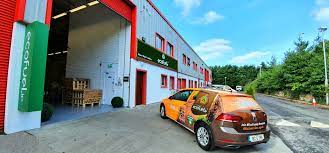Stacked vs Loose Explained
The Introduction
Where traditionally firewood is sold by loose volume when someone quotes you a price for a builders bag or a trailer load, it's easy to get confused between other sizes available.
To help you learn more about the sizes that are available from our online store, we created a short guide about our hand-packed crate of firewood to show you how our hand stacked crate can offer you more logs, compared to the equivalent volume that is loosely packed, despite the fact that our box is the same size.
To measure the volumes of our firewood, we use a cubic meter, that is the SI derived unit of volume. It's SI symbol is m3, and it is the volume of a cube with edges one metre in length.

How Do We Do It
In our trade, we adapted to Europe's standard practice where logs to a consumer are delivered in stacked volume. This way, we ensure our customer receives maximum value and amount of logs per each m3 of firewood purchased.
When we supply firewood lose packed in our City Bag Firewood, the volume of the bag is calculated in hand stacked volume, this way we can ensure our customer understands the volume of logs they are purchasing and can also compare it vs our cubic meter crate.

Conversion Factors for Firewood’s Measurements
Conversion factors are used when comparing different measures of firewood. The reference values are average. For example, one solid cubic metre equals approximately 2.5 loose cubic metres. The exact range of equivalence is 2.2–2.6 -fold. One loose cubic metre equals about 0.40 solid cubic metres.
Firewood’s measurements can be compared with each other and conversed into litres by using the conversion factors below.
Solid cubic metre (m³ˢ) equals averagely
- 1.5 stacked cubic metres
- 2.5 loose cubic metres
- 1 000 litres
Stacked cubic metre (m³ˢᵗ) equals averagely.
- 1.67 loose cubic metres
- 0.67 solid cubic metres
- 670 litres
Loose cubic metre (m³ᶩͮ ) equals averagely
- 0.6 stacked cubic metres
- 0.4 solid cubic metres
- 400 litres


